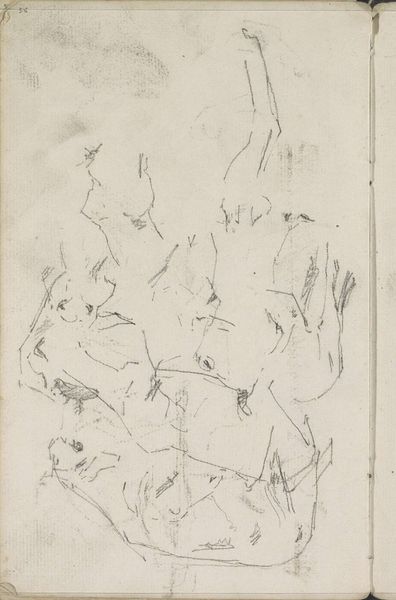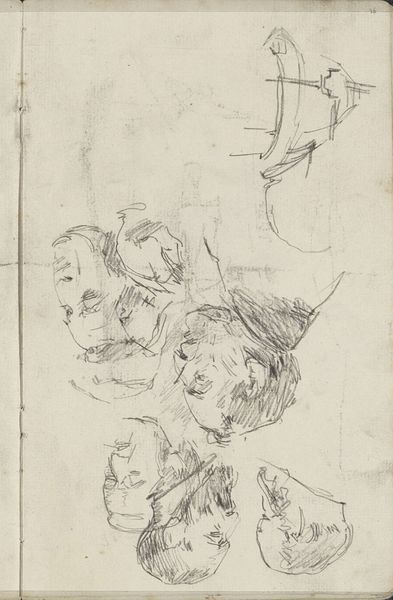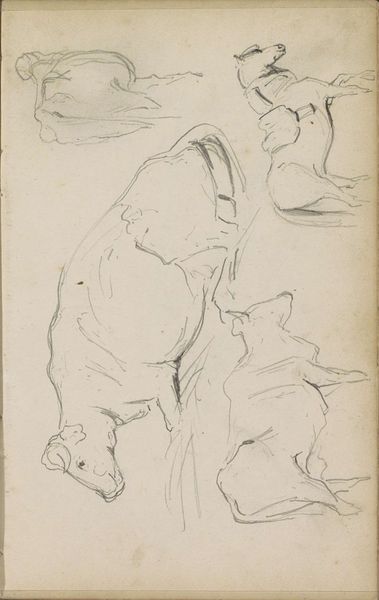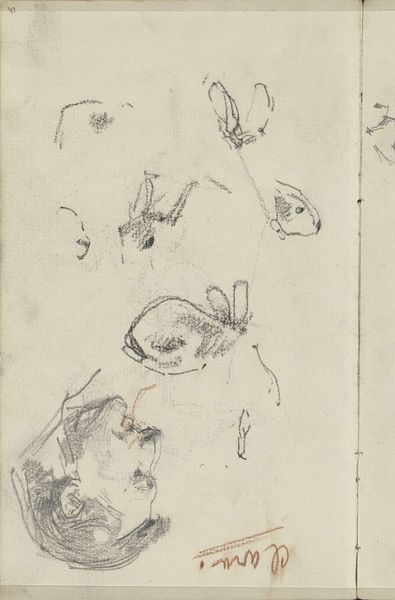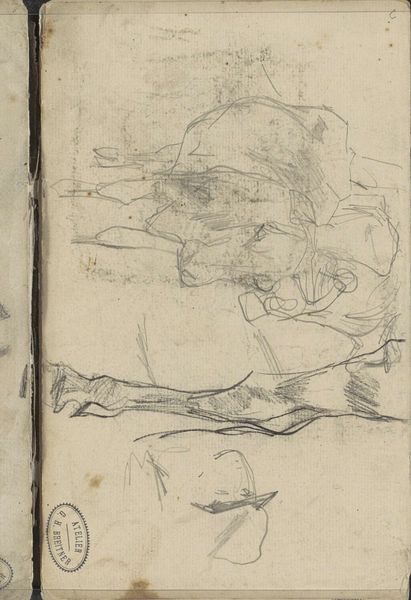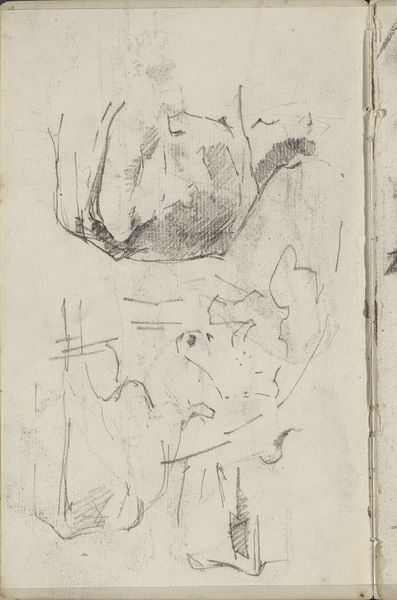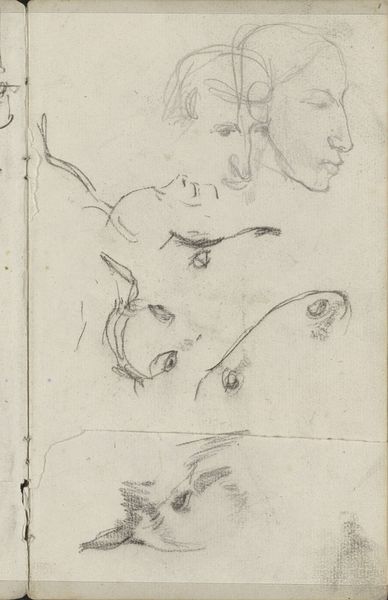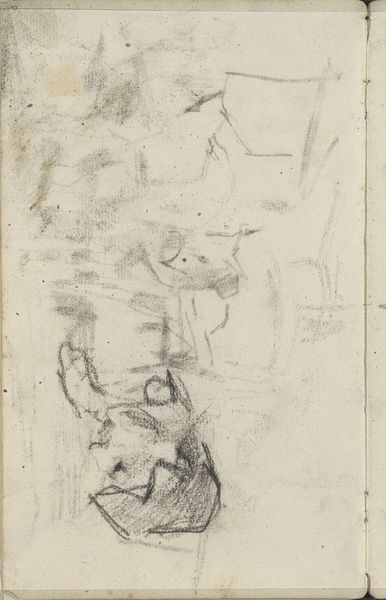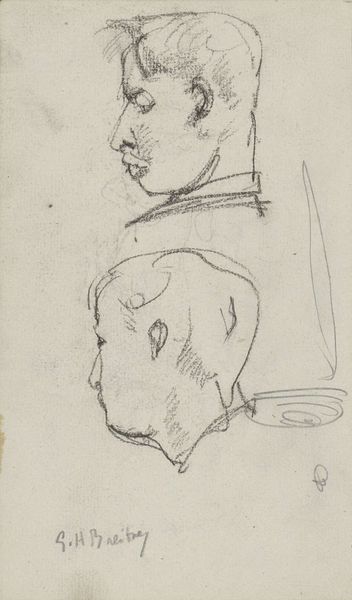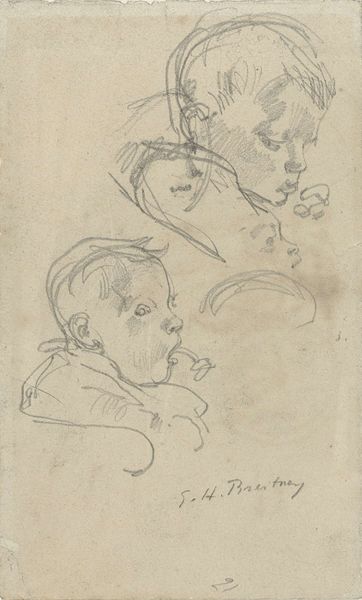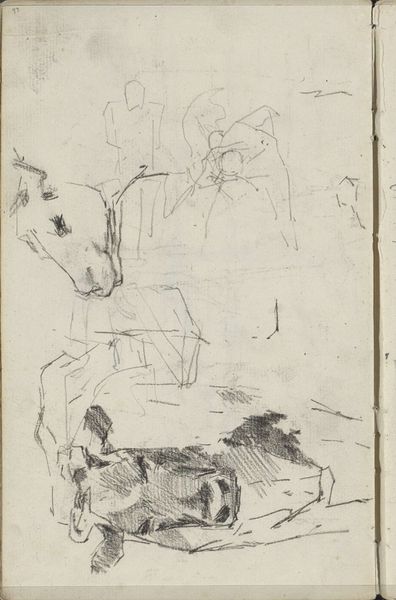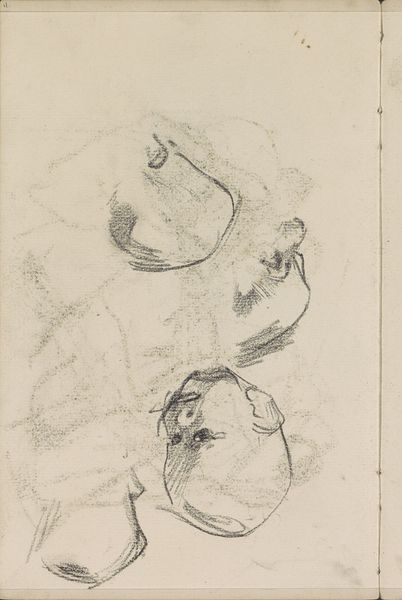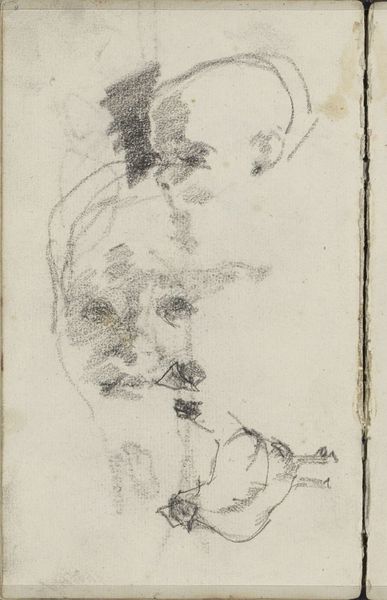
Dimensions: height 194 mm, width 115 mm
Copyright: Rijks Museum: Open Domain
Curator: This is George Hendrik Breitner’s “Kinderhoofden,” created around 1898. It’s a delicate pencil sketch on paper, currently held here at the Rijksmuseum. Editor: It’s captivating! These fragmented glimpses of children's faces, almost ghostlike. The raw quality of the pencil work is especially poignant, almost like a memory fading. Curator: Indeed. Breitner had a particular fascination with capturing fleeting moments of everyday life. Here, he focuses on the innocence and vulnerability often associated with childhood. Notice how the loose lines suggest movement, as though he's sketching from life, capturing fleeting expressions. Editor: Absolutely. And the choice of pencil enhances that sense of immediacy. It is an accessible and almost ephemeral medium that lends itself well to capturing quick impressions. I’m thinking of the availability of paper and pencil—they are easily carried to many locations in the city—compared to hauling around paints or clay. Curator: I agree. It’s worth noting Breitner’s association with Impressionism; though largely self-taught, the techniques he adopted emphasized spontaneity. What meanings can be discerned by viewing children? Childhood imagery is typically laden with ideas around innocence, potential, even nation-building. How do we reckon with these sketches then? Editor: I find the lack of finish quite striking. These aren’t idealized representations, but rather working sketches, showing us Breitner's process. These types of raw sketches grant such rare insight into his technique and thinking! It is all about his engagement with materials and his process, making the everyday accessible. Curator: The unfinished nature makes them feel less constructed, closer to genuine emotion. Breitner often employed photography, though, to capture initial poses and later work on details back in the studio. Does that awareness alter your view? Editor: Not really, knowing the artist employed photography offers insight into his method. This emphasizes the link between art and technology, how new processes are assimilated. Curator: Well, considering how prevalent child imagery became for representing both national identity and innocence, I can't help seeing a social context implied in this choice of subject by the artist, Breitner. Editor: Interesting how that simplicity and lack of embellishment are tied into complex social questions around the function of art itself! Curator: Looking closely today, that’s exactly the lingering resonance of this seemingly simple work for me. Editor: I appreciate how the choice of materials emphasizes access. Thanks for your analysis!
Comments
No comments
Be the first to comment and join the conversation on the ultimate creative platform.
